Fannie Mae 2009 Annual Report Download - page 11
Download and view the complete annual report
Please find page 11 of the 2009 Fannie Mae annual report below. You can navigate through the pages in the report by either clicking on the pages listed below, or by using the keyword search tool below to find specific information within the annual report.-
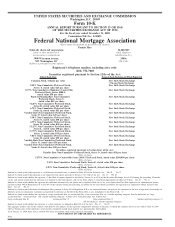 1
1 -
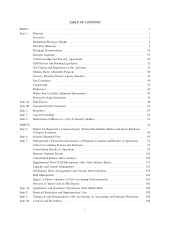 2
2 -
 3
3 -
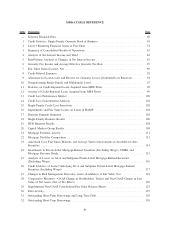 4
4 -
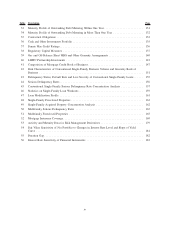 5
5 -
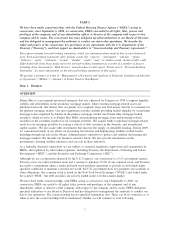 6
6 -
 7
7 -
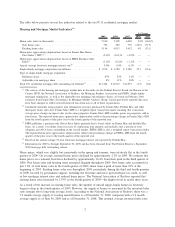 8
8 -
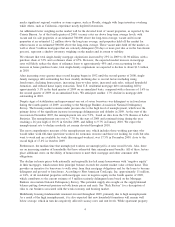 9
9 -
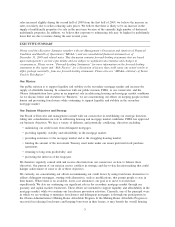 10
10 -
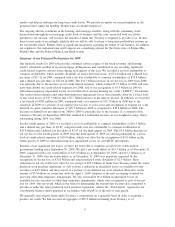 11
11 -
 12
12 -
 13
13 -
 14
14 -
 15
15 -
 16
16 -
 17
17 -
 18
18 -
 19
19 -
 20
20 -
 21
21 -
 22
22 -
 23
23 -
 24
24 -
 25
25 -
 26
26 -
 27
27 -
 28
28 -
 29
29 -
 30
30 -
 31
31 -
 32
32 -
 33
33 -
 34
34 -
 35
35 -
 36
36 -
 37
37 -
 38
38 -
 39
39 -
 40
40 -
 41
41 -
 42
42 -
 43
43 -
 44
44 -
 45
45 -
 46
46 -
 47
47 -
 48
48 -
 49
49 -
 50
50 -
 51
51 -
 52
52 -
 53
53 -
 54
54 -
 55
55 -
 56
56 -
 57
57 -
 58
58 -
 59
59 -
 60
60 -
 61
61 -
 62
62 -
 63
63 -
 64
64 -
 65
65 -
 66
66 -
 67
67 -
 68
68 -
 69
69 -
 70
70 -
 71
71 -
 72
72 -
 73
73 -
 74
74 -
 75
75 -
 76
76 -
 77
77 -
 78
78 -
 79
79 -
 80
80 -
 81
81 -
 82
82 -
 83
83 -
 84
84 -
 85
85 -
 86
86 -
 87
87 -
 88
88 -
 89
89 -
 90
90 -
 91
91 -
 92
92 -
 93
93 -
 94
94 -
 95
95 -
 96
96 -
 97
97 -
 98
98 -
 99
99 -
 100
100 -
 101
101 -
 102
102 -
 103
103 -
 104
104 -
 105
105 -
 106
106 -
 107
107 -
 108
108 -
 109
109 -
 110
110 -
 111
111 -
 112
112 -
 113
113 -
 114
114 -
 115
115 -
 116
116 -
 117
117 -
 118
118 -
 119
119 -
 120
120 -
 121
121 -
 122
122 -
 123
123 -
 124
124 -
 125
125 -
 126
126 -
 127
127 -
 128
128 -
 129
129 -
 130
130 -
 131
131 -
 132
132 -
 133
133 -
 134
134 -
 135
135 -
 136
136 -
 137
137 -
 138
138 -
 139
139 -
 140
140 -
 141
141 -
 142
142 -
 143
143 -
 144
144 -
 145
145 -
 146
146 -
 147
147 -
 148
148 -
 149
149 -
 150
150 -
 151
151 -
 152
152 -
 153
153 -
 154
154 -
 155
155 -
 156
156 -
 157
157 -
 158
158 -
 159
159 -
 160
160 -
 161
161 -
 162
162 -
 163
163 -
 164
164 -
 165
165 -
 166
166 -
 167
167 -
 168
168 -
 169
169 -
 170
170 -
 171
171 -
 172
172 -
 173
173 -
 174
174 -
 175
175 -
 176
176 -
 177
177 -
 178
178 -
 179
179 -
 180
180 -
 181
181 -
 182
182 -
 183
183 -
 184
184 -
 185
185 -
 186
186 -
 187
187 -
 188
188 -
 189
189 -
 190
190 -
 191
191 -
 192
192 -
 193
193 -
 194
194 -
 195
195 -
 196
196 -
 197
197 -
 198
198 -
 199
199 -
 200
200 -
 201
201 -
 202
202 -
 203
203 -
 204
204 -
 205
205 -
 206
206 -
 207
207 -
 208
208 -
 209
209 -
 210
210 -
 211
211 -
 212
212 -
 213
213 -
 214
214 -
 215
215 -
 216
216 -
 217
217 -
 218
218 -
 219
219 -
 220
220 -
 221
221 -
 222
222 -
 223
223 -
 224
224 -
 225
225 -
 226
226 -
 227
227 -
 228
228 -
 229
229 -
 230
230 -
 231
231 -
 232
232 -
 233
233 -
 234
234 -
 235
235 -
 236
236 -
 237
237 -
 238
238 -
 239
239 -
 240
240 -
 241
241 -
 242
242 -
 243
243 -
 244
244 -
 245
245 -
 246
246 -
 247
247 -
 248
248 -
 249
249 -
 250
250 -
 251
251 -
 252
252 -
 253
253 -
 254
254 -
 255
255 -
 256
256 -
 257
257 -
 258
258 -
 259
259 -
 260
260 -
 261
261 -
 262
262 -
 263
263 -
 264
264 -
 265
265 -
 266
266 -
 267
267 -
 268
268 -
 269
269 -
 270
270 -
 271
271 -
 272
272 -
 273
273 -
 274
274 -
 275
275 -
 276
276 -
 277
277 -
 278
278 -
 279
279 -
 280
280 -
 281
281 -
 282
282 -
 283
283 -
 284
284 -
 285
285 -
 286
286 -
 287
287 -
 288
288 -
 289
289 -
 290
290 -
 291
291 -
 292
292 -
 293
293 -
 294
294 -
 295
295 -
 296
296 -
 297
297 -
 298
298 -
 299
299 -
 300
300 -
 301
301 -
 302
302 -
 303
303 -
 304
304 -
 305
305 -
 306
306 -
 307
307 -
 308
308 -
 309
309 -
 310
310 -
 311
311 -
 312
312 -
 313
313 -
 314
314 -
 315
315 -
 316
316 -
 317
317 -
 318
318 -
 319
319 -
 320
320 -
 321
321 -
 322
322 -
 323
323 -
 324
324 -
 325
325 -
 326
326 -
 327
327 -
 328
328 -
 329
329 -
 330
330 -
 331
331 -
 332
332 -
 333
333 -
 334
334 -
 335
335 -
 336
336 -
 337
337 -
 338
338 -
 339
339 -
 340
340 -
 341
341 -
 342
342 -
 343
343 -
 344
344 -
 345
345 -
 346
346 -
 347
347 -
 348
348 -
 349
349 -
 350
350 -
 351
351 -
 352
352 -
 353
353 -
 354
354 -
 355
355 -
 356
356 -
 357
357 -
 358
358 -
 359
359 -
 360
360 -
 361
361 -
 362
362 -
 363
363 -
 364
364 -
 365
365 -
 366
366 -
 367
367 -
 368
368 -
 369
369 -
 370
370 -
 371
371 -
 372
372 -
 373
373 -
 374
374 -
 375
375 -
 376
376 -
 377
377 -
 378
378 -
 379
379 -
 380
380 -
 381
381 -
 382
382 -
 383
383 -
 384
384 -
 385
385 -
 386
386 -
 387
387 -
 388
388 -
 389
389 -
 390
390 -
 391
391 -
 392
392 -
 393
393 -
 394
394 -
 395
395
 |
 |
market and help in reducing our long-term credit losses. We provide an update on our participation in the
program below under the heading “Homeowner Assistance Initiatives.”
The ongoing adverse conditions in the housing and mortgage markets, along with the continuing credit
deterioration throughout our mortgage credit book of business and the costs associated with our efforts
pursuant to our mission, will increase the amount of funds that Treasury is required to provide to us. In turn,
these factors make it exceedingly unlikely that we will be able to return to long-term profitability anytime in
the foreseeable future. Further, there is significant uncertainty regarding the future of our business. In addition,
our regulators, the Administration and Congress are considering options for the future state of Fannie Mae,
Freddie Mac and the Federal Home Loan Bank system.
Summary of our Financial Performance for 2009
Our financial results for 2009 reflected the continued adverse impact of the weak economy and housing
market, which has resulted in record mortgage delinquencies and contributed to our recording significant
credit-related expenses and net losses during each quarter of the year. We recorded a net loss attributable to
common stockholders, which includes dividends on senior preferred stock, of $74.4 billion and a diluted loss
per share of $13.11 in 2009, compared with a net loss attributable to common stockholders of $59.8 billion
and a diluted loss per share of $24.04 in 2008. The $14.7 billion increase in our net loss in 2009 from 2008
was primarily due to the increase in our credit-related expenses, which totaled $73.5 billion in 2009 and were
more than double our credit-related expenses for 2008, and to our recognition of $5.5 billion in 2009 in
other-than-temporary impairment losses on our federal low-income housing tax credit (“LIHTC”) investments.
Our credit-related expenses and other-than-temporary impairment losses were partially offset by a lower level
of fair value losses of $17.3 billion and a $5.7 billion increase in net interest income. In addition, we recorded
a tax benefit of $985 million in 2009, compared with a tax expense of $13.7 billion in 2008 due to the
carryback in 2009 of a portion of our current year tax loss to prior years and recognition of expense for a net
deferred tax asset valuation allowance of $25.7 billion in 2009 as compared to $30.8 billion in 2008. The
decrease in diluted loss per share from 2008 to 2009 is primarily due to the issuance of a common stock
warrant to Treasury in September 2008 that resulted in a substantial increase in our weighted-average shares
outstanding during 2009 over 2008.
For the fourth quarter of 2009, we recorded a net loss attributable to common stockholders of $16.3 billion
and a diluted loss per share of $2.87, compared with a net loss attributable to common stockholders of
$19.8 billion and a diluted loss per share of $3.47 for the third quarter of 2009. The $3.4 billion decrease in
our net loss for the fourth quarter of 2009 from the third quarter of 2009 was driven principally by a lower
level of credit-related expenses of $10.0 billion, which was offset by the recognition of $5.0 billion in the
fourth quarter of 2009 in other-than-temporary impairment losses on our LIHTC investments.
Because of our significant net losses, we have not been able to maintain a positive net worth without
government funding since September 30, 2008. We had a net worth deficit of $15.3 billion as of December 31,
2009, compared with a net worth deficit of $15.0 billion as of September 30, 2009, and $15.2 billion as of
December 31, 2008. Our net worth deficit as of December 31, 2009 was negatively impacted by the
recognition of our net loss of $72.0 billion and senior preferred stock dividends of $2.5 billion. These
reductions in our net worth were offset by our receipt of $59.9 billion in funds from Treasury under the senior
preferred stock purchase agreement, as well as from a reduction in unrealized losses on available-for-sale
securities of $4.9 billion and the reversal of a portion of our deferred tax asset valuation allowance, in the
amount of $3.0 billion, in connection with our April 1, 2009 adoption of the new accounting standard for
assessing other-than-temporary impairments. We also reclassified $6.4 billion in unrealized losses on
available-for-sale securities to other-than-temporary impairments, which were recognized as part of our net
loss for 2009. Our net worth, which is the basis for determining the amount that Treasury has committed to
provide us under the senior preferred stock purchase agreement, reflects the “Total deficit” reported in our
consolidated balance sheets prepared in accordance with GAAP as of the end of each period.
We generally may request funds under Treasury’s commitment on a quarterly basis in order to maintain a
positive net worth. We had received an aggregate of $59.9 billion in funding from Treasury as of
6
